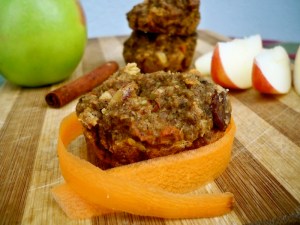Before I begin this post I’d like to say a big thank you to all my readers. Thanks for your encouragement from my last post. It is you all that push me to keep creating my sugar-free recipes!
Also, I’d like to thank my sponsors, Swanson Vitamins and Snacklets Inc., for making this site possible. If you have a chance, check out their sites. Swanson has great prices on vitamins, minerals, and health products. In fact, I even buy my vitamins there! Snacklets Inc. makes great kale chips snacks in a few different flavors. They’re portable, easy, tasty, and much healthier than a bag of potato chips! If you are interested in becoming a sponsor yourself, check out this page and email me at spoonfulofsugarfree(at)gmail.com.
Now onto the real topic of this post,
7 Nutritional Strategies to Optimize Athletic Performance
I was privileged enough to attend a seminar this past weekend for female athletes. One of the guest speakers was Cynthia Sass, author of Sass Yourself Slim and the Flat Belly Diet. Ms. Sass is a Registered Dietitian and certified in Sports Dietetics.
Her 7 Strategies for Athletic performance don’t just apply to athletes, though, but to all who wish to optimize their health and recovery. Here are the strategies:
1. Don’t workout on an empty stomach. Many believe that working out on an empty stomach will help you burn pure body fat. However, it is impossible to burn just pure body fat; and when you don’t eat, your body kicks into starvation mode to try and save the extra fat and energy you have. You can exercise longer and harder with fuel, even if you eat only a small piece of fruit.
2. Eat a moderate amount good carbs, not bad carbs. Carbohydrates are the preferred food source for the body because they are readily usable for the muscles. Choose carbs from fruits, vegetables, and whole grains, not refined sugars and flours. A bonus from eating carbohydrates from fruits ans veggies: the antioxidants in the produce open up your body’s cells improve circulation and fuel the cells.
3. Focus on good fat. She prefers healthy, plant-based fats like those found in nuts, avocado, and olive/coconut oil. These fats help you stay fuller longer and increase the production of a chemical in the gut that shuts off hunger cues. Studies show that eating saturated fats from processed sources (like refined oil or meats) will decrease your circulation for 4+ hours after eating. This can lead to a decrease in sports performance.
4. Don’t overdo protein. Protein is good, and the body needs it to recover muscle mass. However, a typical female athlete needs only 105 grams of protein per day (males need more like 150g, depending on your size). If you eat too much protein, it will either get stored as fat or used as fuel. The problem with this is that protein is not readily absorbable like carbohydrates. There is an extra nitrogen attached to the protein molecule that will break off during digestion if it is being used for fuel. This nitrogen molecule then turns into ammonia in the blood stream, which is acidic and can break down bones and is hard on the kidneys.
5. Go Organic as much as possible. Some say that organic food doesn’t have any more health benefits than conventional, but it does! Antioxidants in fruits and vegetables protect the food against parasites and other natural dangers to food. When the produce is sprayed with chemicals, though, the produce doesn’t have to produce as many antioxidants to defend itself. Organic is expensive, though, so try buying organic for meat and the “dirty dozen.”
6. Make produce the main attraction of every meal. Produce helps with athletic performance and recovery because of the high vitamin, fiber, and antioxidant content. One study shows that athletes who ate watercress after working out experienced less DNA damage than those who didn’t. Another study showed that athletes who drank tomato juice tested no oxidative stress, while those who didn’t drink the tomato juice had up to 75% more oxidative stress.
7. Go easy on alcohol. If you must drink alcohol, limit it to one serving because alcohol can increase the risk of cancer. It also decreases glycogen replenishment by up to 50%, which means your muscles don;t recover as quickly.
What to eat Pre-Exercise:
Eat something that is easy to digest and high in carbohydrates. Don’t eat something high in fat, protein, or fiber because they take longer to digest and aren’t easily available for the body to use. Example: a small bowl of brown rice cereal with almond milk and a small banana.
What to eat Post-Exercise:
What you eat after exercising is meant to replenish and recover your muscles. Eat a meal that contains each of the following: a lean protein source, a healthy fat, a whole grain, produce, and natural seasonings/spices. Example: Basic Brown Rice Stir Fry.
Fun Fact!
Spices, herbs, and seasonings are really high in antioxidants, which can help with recovery and prevent disease. Did you know one teaspoon of cinnamon contains the same amount of antioxidants as a cup of blueberries? Also, one teaspoon of oregano contains the same amount of antioxidants as a sweet potato! So load up on your herbs and spices, and sprinkle them on everything.
Thought-provoking, mind-prodding question of the day:
What are some of the “rules” you follow to optimize your health and athletic recovery?
Conference Works Cited: Sass, Cynthia. “7 Nutrition Strategies to Optimize Athletic Recovery.” The Female Athlete: Strategies for Optimal Performance and Injury Prevention. Bay Care Health System. Hilton Hotel, Tampa, Florida. 4 Aug 2012. Keynote Speech.




















Follow Me!